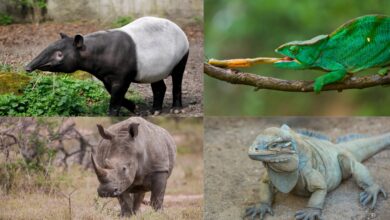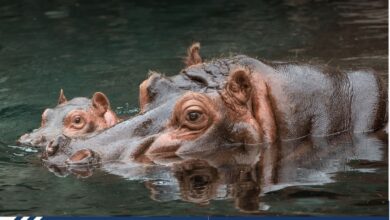How Do Sloths Protect Themselves? (Explained)

How Do Sloths Protect Themselves? (Explained)
Sloths are tranquil and slow moving animals, predominantly inhabit treetops, where they hang upside down and consume leaves. While it might seem unlikely for such peaceful creatures to harm others, they are not without natural predators. So, how exactly do sloths defend themselves?
Primarily, sloths employ a strategy of concealment. They minimize encounters with potential threats, such as big cats, by residing in the safety of trees. Descending to the ground only once a week for necessities, they mitigate the risk of predation.
Additionally, their fur, adorned with algae, provides effective camouflage against the surrounding foliage.
In the rare event of a confrontation, sloths possess a formidable defense mechanism. Equipped with long, sharp claws and robust forearms, they have the means to protect themselves if the need arises. The seemingly gentle sloths thus navigate the challenges of survival through a combination of strategic hiding and potent physical defenses.
The Camouflaging Fur of Sloths
Sloths engage in a distinctive symbiotic relationship with fungi and algae, manifested in their unique type of hair. In three-toed sloths, the fur comprises two layers: a soft interior layer lying close to the skin and an outer layer of coarse oval hairs with distinctive cracks. Conversely, two-toed sloths have a single fluted layer of fur.
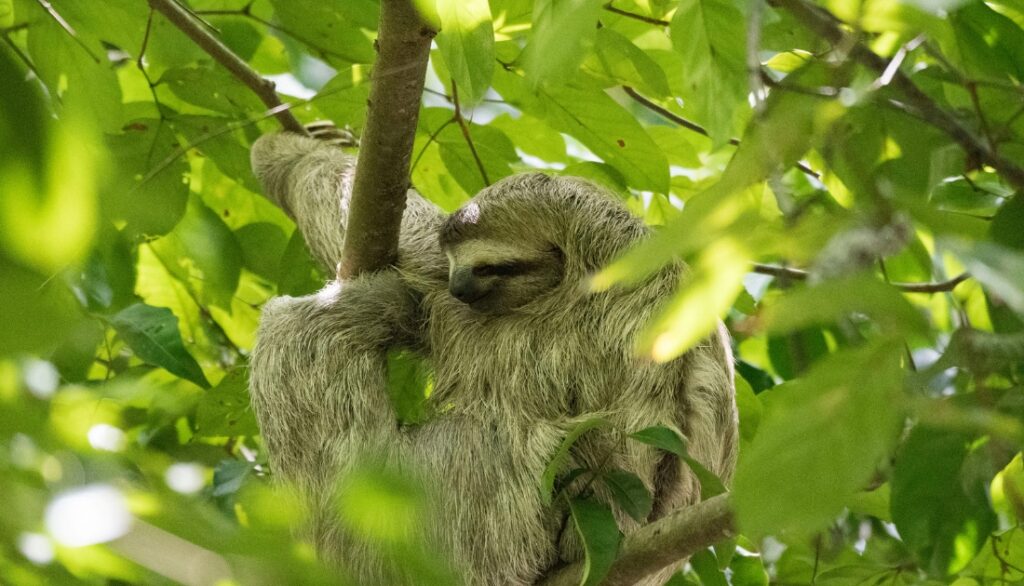
In both species, the cracks and grooves in the fur’s fluted ribs serve as a breeding ground for moisture. Various fungi and algae thrive in these damp crevices, contributing to the distinctive green hue observed in some sloths’ fur. Many experts speculate that this green tinge provides effective camouflage for sloths in their natural habitats.
Inhabiting the tropical rainforests of Central and South America, sloths lead arboreal lives, nearly entirely immersed in the dense foliage of the trees. Their naturally gray and shaggy fur, resembling moss or creepers, serves as an initial layer of camouflage.
See Also: How Do Hippos Breathe Underwater? (Real Answer)
Enhanced by the green tinge from algae, sloths achieve heightened blending capabilities against the lush tropical backdrop. This specialized camouflage acts as a crucial defense mechanism, aiding sloths in evading potential predators.
Sloths Move Very Very Slowly
The significance of camouflage becomes paramount for sloths due to their exceptionally sluggish pace, earning them the title of the slowest mammals on the planet. In the face of swift predators like big cats, sloths have minimal chances of escape.
Their minimal movement contributes to the illusion of seamlessly blending into the background, making their camouflage even more convincing and ensuring their safety in their rainforest habitat.
The deliberate slowness of sloths can be attributed to their relatively weak hind legs, with the majority of their strength concentrated in their robust grip. This intricate interplay of slow movement and effective camouflage is essential for the survival of these remarkable creatures in the face of faster, potentially threatening predators.
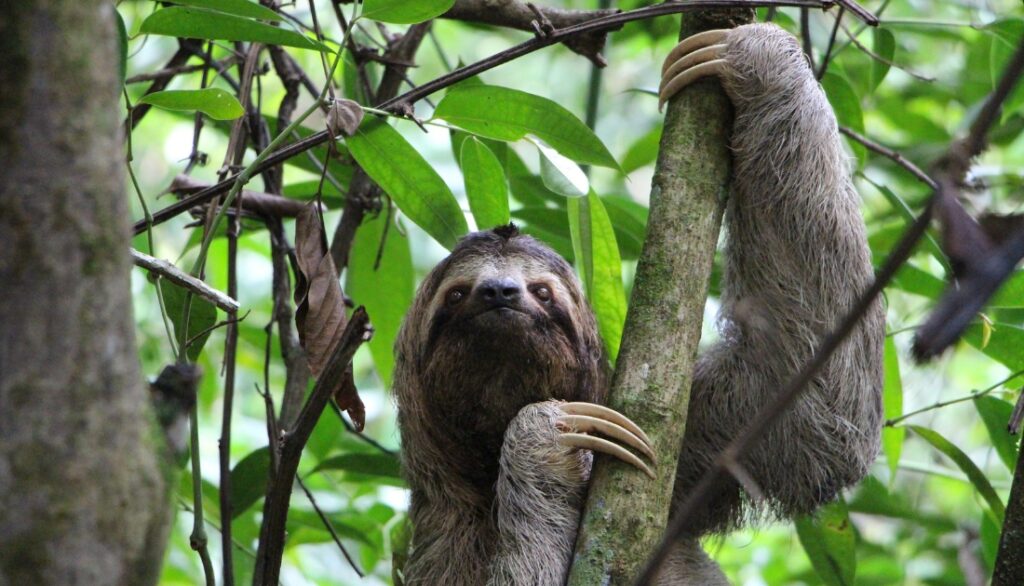
Sloths, with an average weight ranging from 9 to 17 pounds (4-8 kg), akin to a small dog, rely on robust forearms to support their bodies as they hang upside down from branches.
The gradual pace of sloths is intricately linked to their evolutionary adaptation to a tree-dwelling lifestyle. Dwelling high in the trees minimizes the risk of predators, allowing sloths to conserve energy that would otherwise be expended in self-defense.
Furthermore, sloths have evolved to consume an almost exclusively leaf-based diet. The low nutritional value and calorie content of leaves contribute to a slower metabolism. This dietary adaptation aligns with their arboreal existence, creating a chain reaction that results in the unhurried and deliberate movement characteristic of these unique creatures.
Sloths Can Fight With their Claws
To navigate their treetop habitats effectively, sloths boast impressive upper-body strength, compensating for their lower overall muscle mass compared to other mammals. While sloths allocate only 20-25% of their total body mass to muscles, a lower proportion than most mammals with 30-45%, their forelimbs harbor a surprising 5% of their entire body mass, not limited to skeletal muscle.
These forelimb muscles play a vital role in gripping, a crucial skill for their arboreal lifestyle. Armed with sharp claws, sloths possess a unique defense mechanism against ground predators. Although their gradual movements may pose a challenge, their claws offer a modest line of defense when escape is not an option.

Sloth’s Best Defense by staying in trees
Sloths, renowned for their arboreal lifestyle, spend the majority of their lives suspended from the treetops. With a penchant for lengthy slumber that can exceed fifteen hours daily, they rouse at night to feast on leaves.
Their connection to the trees extends to reproduction, as sloths mate and give birth aloft. The young offspring cling to their mothers for a remarkable nine-month span before venturing onto branches of their own.
Even in death, some sloths remain in the trees. Their strong grips endure, allowing them to hang from tree branches for a period after their passing, showcasing the profound bond between sloths and their elevated habitats.
Sloths conduct nearly all their activities, from mating and eating to giving birth, within the confines of the treetops. The only exception is their departure for “bathroom” purposes.
Descending and ascending trees poses a significant challenge for these slow-moving creatures, fraught with both physical strain and danger. However, the sloth’s unique adaptations likely allow them to effortlessly relieve themselves while suspended from branches, minimizing the need for perilous journeys up and down trees.
Sloths can Provide Habitats For Others
Within the fur of sloths, a complete ecosystem unfolds. Beyond the camouflaging algae, this unique habitat hosts a myriad of fungi and diverse insects.
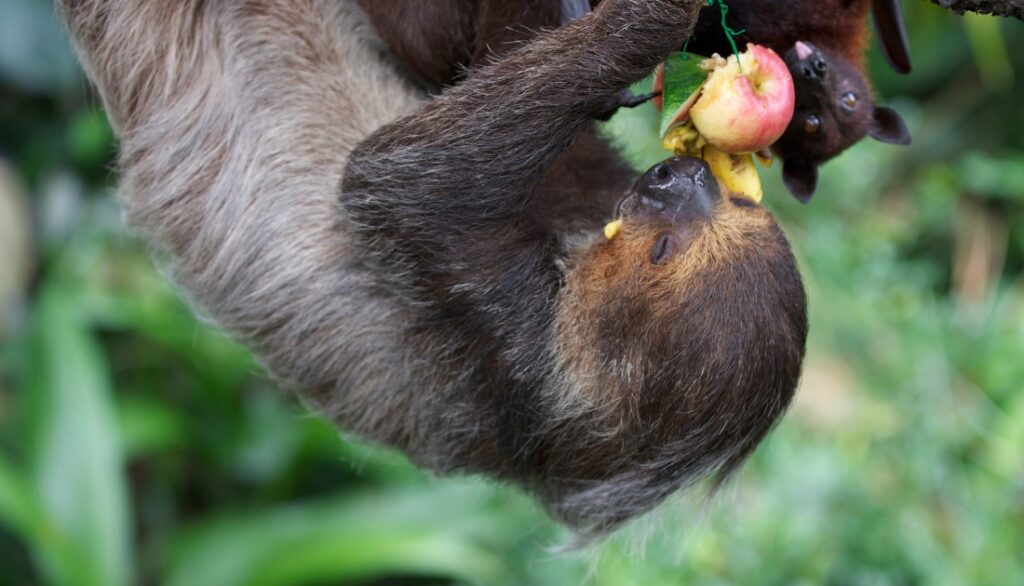
Remarkably, some of these organisms exclusively inhabit sloth fur. Crypotses moths, for instance, find their sole habitat in sloth fur, with individuals numbering as high as 120 living within the fur of a single sloth.
Dependent on sloths for their unique life cycle, moths rely on these creatures to descend to the ground for defecation. In this terrestrial interlude, female moths deposit their eggs in the droppings – the exclusive sustenance for their larvae. These larvae subsequently mature into adults, taking flight to return to the sloths and perpetuate the reproductive cycle.
FAQs
Sloths can turn their head to how much degrees?
Sloths have a limited range of motion in their necks, and they can turn their heads approximately 270 degrees, much like humans. This flexibility allows them to navigate their surroundings while hanging upside down in trees.
Why Sloth Teeth Are Dull But Grow All The Time?
Sloth teeth are dull but continuously grow as an adaptation to their fibrous, leaf-based diet. The constant growth compensates for the wear caused by the abrasive nature of leaves, ensuring that sloths maintain functional teeth for efficient chewing over their lifespan.
Conclusion
While appearing unassuming, sloths possess effective means of self-defense. Their primary strategy involves residing in treetops, sheltered from ground predators like jaguars.
By keeping a distance from these potential threats, sloths minimize the need for direct confrontation. To further elude danger, their ropy gray fur, adorned with green algae, aids in seamless camouflage within the tree foliage, offering protection from aerial predators. This unique combination of habitat choice and visual adaptation showcases the resourcefulness of sloths in safeguarding themselves from various dangers.
During infrequent ground excursions, sloths rely on their extended front claws as a modest form of defense. While not their most robust protective feature, these claws offer some assistance, especially given sloths’ unhurried movements that limit their ability for swift getaways.
